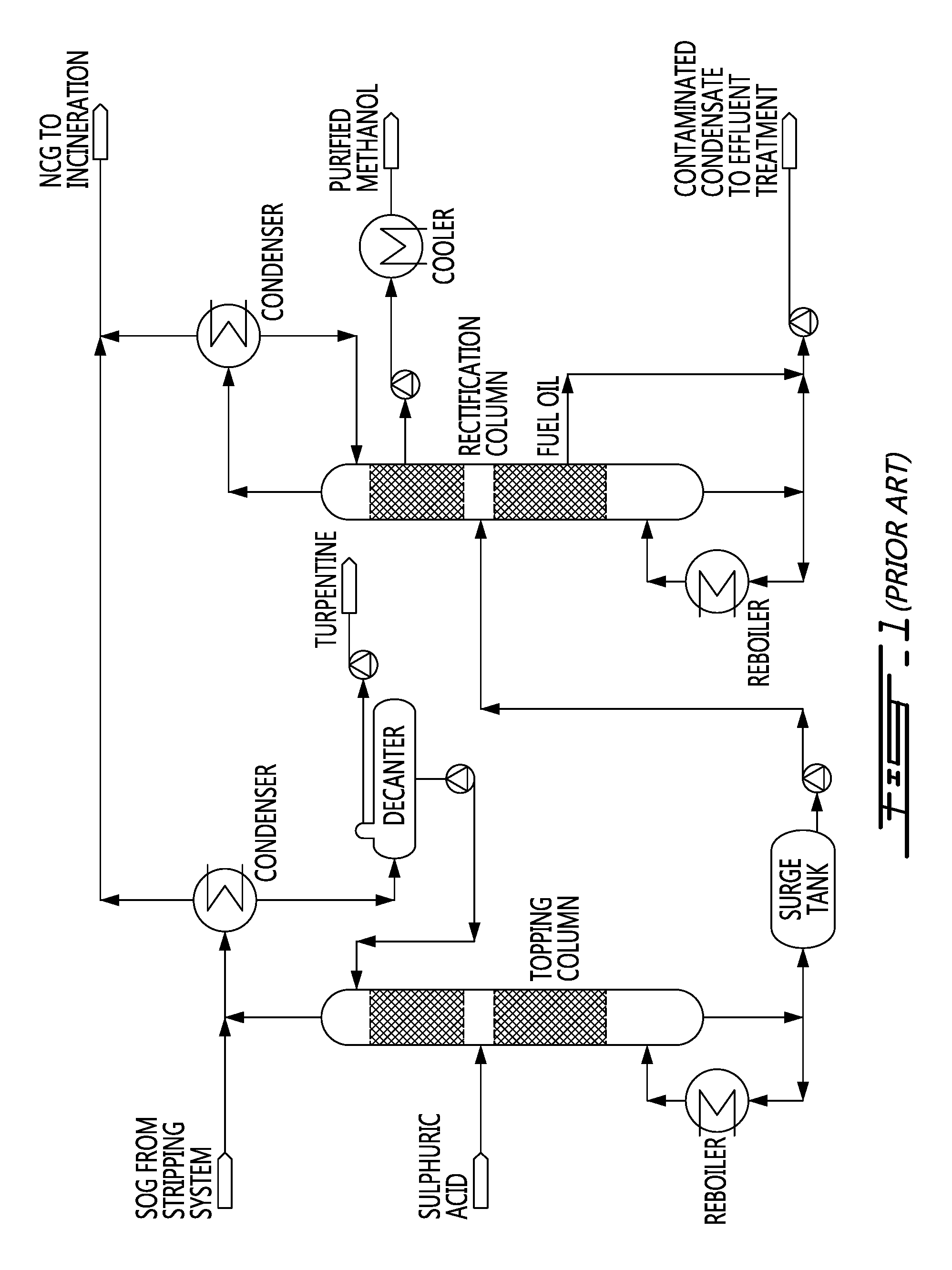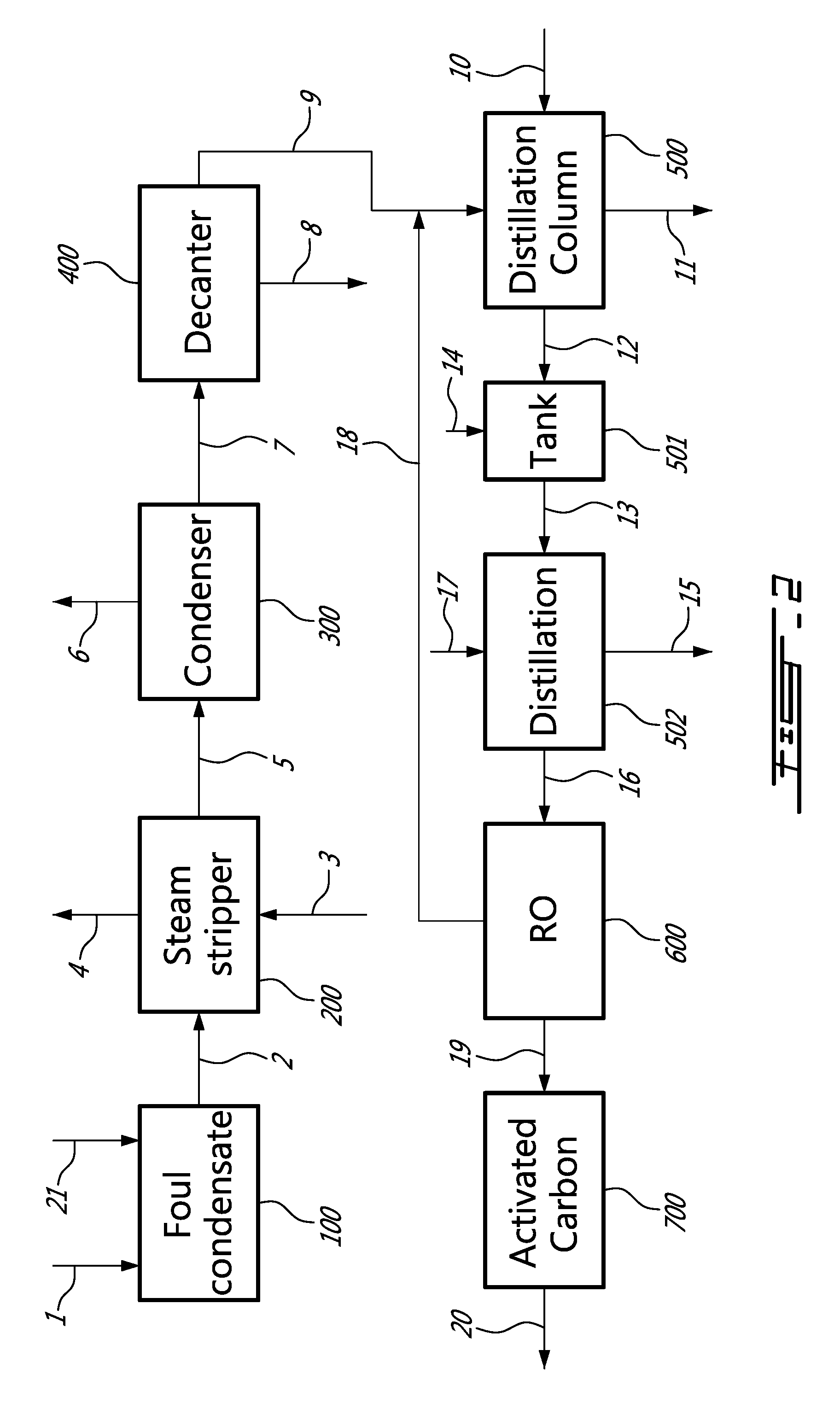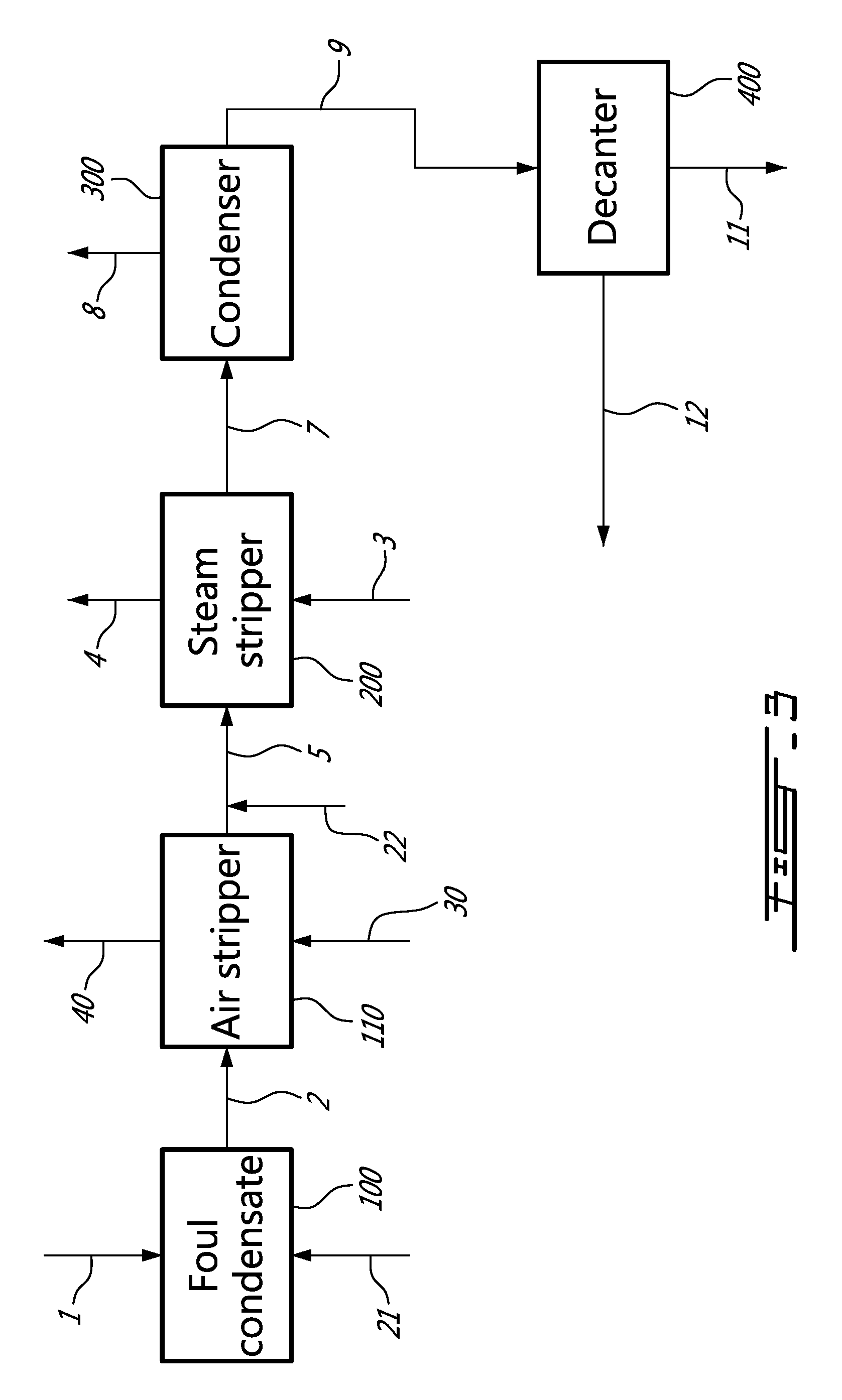Method for producing bio-methanol at pulp mills
a technology of bio-methanol and pulp mills, applied in the direction of ion exchangers, membranes, separation processes, etc., can solve the problems of not being able to meet the emission limits of mills, the methanol content of these streams is not easy to recover or further purify, and the methanol content of these streams is not easy to be used in the mill or sold for specific applications
- Summary
- Abstract
- Description
- Claims
- Application Information
AI Technical Summary
Benefits of technology
Problems solved by technology
Method used
Image
Examples
example 1
[0067]The bio-methanol obtained from a pulp mill after distillation of the SOG condensate (purified methanol of FIG. 1) contains several sulfur compounds such as hydrogen sulphide, methyl mercaptan, dimethyl mercaptan, and dimethyl sulphide. Table I presents the concentration of TRS compounds of this stream. The total TRS is 152.2 ppm. To this stream, solid sodium hydroxide was added to insure that hydrogen sulphide and methyl mercaptan will be converted to the ionic form.
[0068]
TABLE ITRS in the biomethanol after distillationCompoundmg / LHydrogen Sulphide75.2Methyl Mercaptan6.9Dimethyl Sulphide0.0Dimethyl Disulphide99.7Total TRS (expressed as152.2H2S equivalent)
[0069]The biomethanol stream was passed through an RO membrane unit at 25° C. The RO membrane used was the TFC-HR membrane from Koch Membrane Systems, having a NaCl retention of 99.65%. The membrane had a surface area of about 28 cm2. A constant pressure of about 200-400 psig was applied. The filtrate exiting the cell was coll...
example 2
[0074]As mentioned above, treatment of the bio-methanol produced from a pulp mill after distillation of the SOG (FIG. 1) with several passes through an RO membrane can lower the contaminant levels to meet the IMPCA specifications. Table IV shows data after passing the methanol solution from a distillation plant five times through an RO unit. The sulfur dropped to 0.24 ppm while the acetone was 0 ppm. The initial sulfur content in the raw bio-methanol was 452 ppm. The bio-methanol purity was 99.98% after RO treatment. No activated carbon treatment is needed in this case.
[0075]
TABLE IVBio-methanol treatment using ROPermeate of the 5th passSulfur, ppm0.24Acetone, ppm0Purity, %99.98
example 3
[0076]Foul condensate from a sulfite pulp mill was obtained. It initially contained 619.3 ppm sulfur dioxide (as SO32−). Concentrated ammonium hydroxide was added to convert the SO2 to ammonium sulfite. The solution was passed through an RO system. About 96.7% of the ammonium sulfite was retained in the concentrate. The permeate contained only about 20.3 ppm of SO32− which can be further concentrated and purified to produce bio-methanol. The concentrate can be used in the acid cooking plant of an ammonium base sulfite pulp mill.
PUM
| Property | Measurement | Unit |
|---|---|---|
| concentration | aaaaa | aaaaa |
| density | aaaaa | aaaaa |
| boiling point | aaaaa | aaaaa |
Abstract
Description
Claims
Application Information
 Login to View More
Login to View More - R&D
- Intellectual Property
- Life Sciences
- Materials
- Tech Scout
- Unparalleled Data Quality
- Higher Quality Content
- 60% Fewer Hallucinations
Browse by: Latest US Patents, China's latest patents, Technical Efficacy Thesaurus, Application Domain, Technology Topic, Popular Technical Reports.
© 2025 PatSnap. All rights reserved.Legal|Privacy policy|Modern Slavery Act Transparency Statement|Sitemap|About US| Contact US: help@patsnap.com



